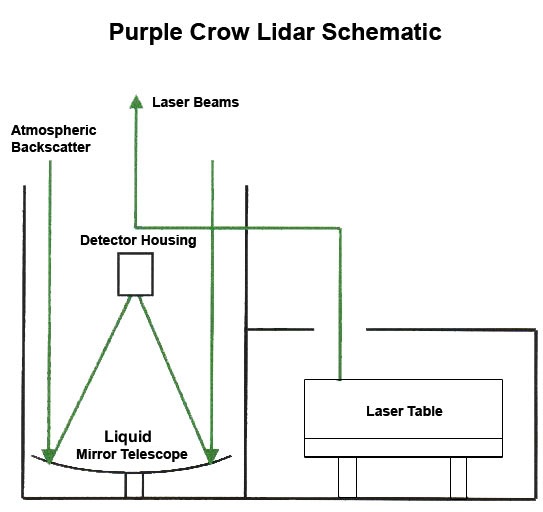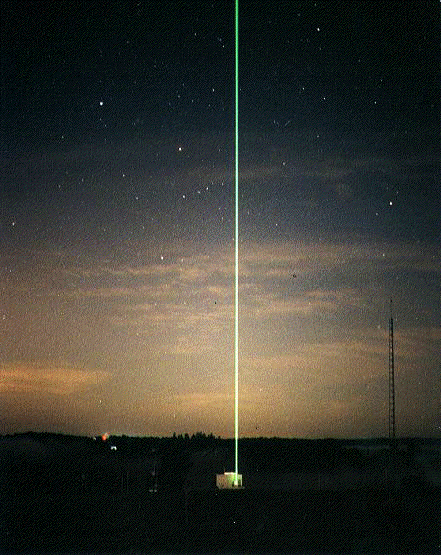
|
|
Rayleigh SystemTransmitterThe PCL laser system employs a seeded Nd:YAG laser with two output beams. One beam is used for Rayleigh-scatter measurements while the other beam simultaneously pumps a pulse dye amplifier that is seeded with a narrow-band tunable ring-dye laser for sodium resonance fluorescence measurements. The laser system system is in a separate room, with the temperature controlled to within a degree to help maintain the frequency stability of the system. On the laser table are the four lasers that compose the transmitter system: (1) an injection seeded Nd:YAG laser, (2) a 6-W argon-ion laser used to pump the lasing medium in (3) a ring-dye laser and in (4) a custom-pulse dye amplifier. The Nd:YAG and sodium beams are each expanded; they then exit tha laser room and are directed to the top of the tripoid in the telescope room. The transmitted beams are then directed upward along the telescope's axis. ReceiverThe backscattered light incident on the liquid mirror is imaged onto the detector box at the telescope's prime focus and split into the Rayleigh, sodium and Raman components. The light then passes through the appropriate narrow-band interference filter and is directed to the photocathode of a photomultiplier, whose output is amplified and sent to a multichannel scaler-averager, which includes a 100-MHz discriminator. The range gated signal is then co-added for the desired number of laser shots and stored on a personal computer. Here is a schematic of this system:  For more information, see Sica et. al, "Lidar measurements taken with a large-aperture liquid mirror. 1. Rayleigh-scatter system," Appl. Opt., 34, 6925-6936, 1995. Updated July 6, 2009 |
